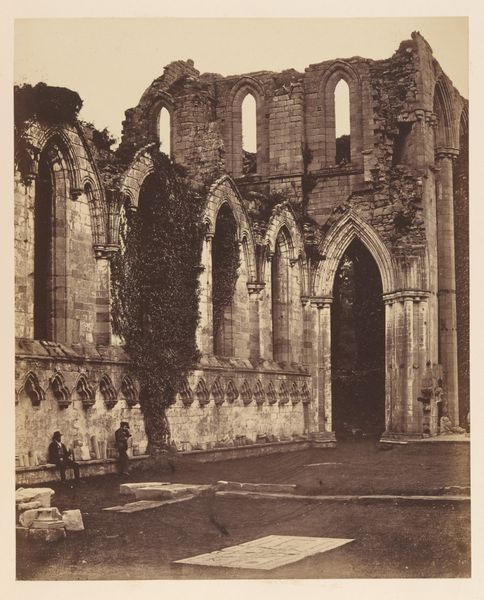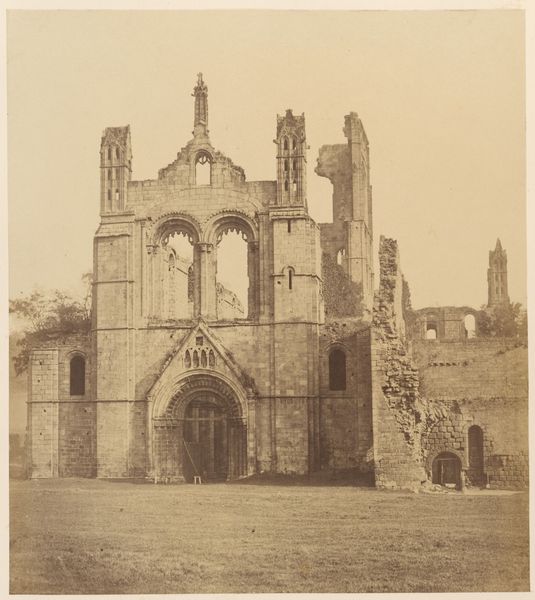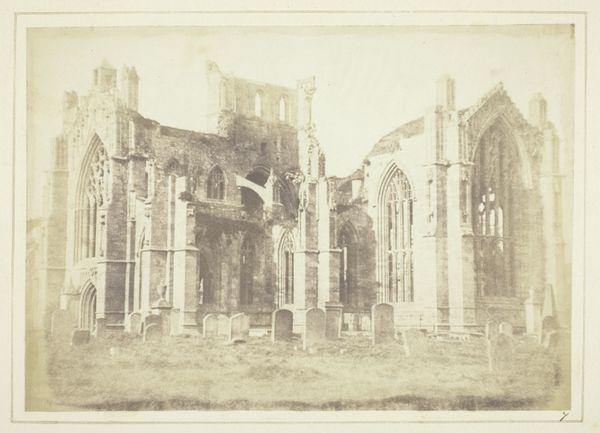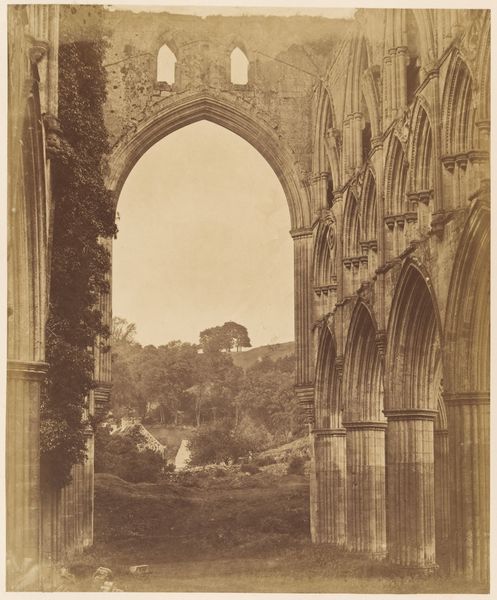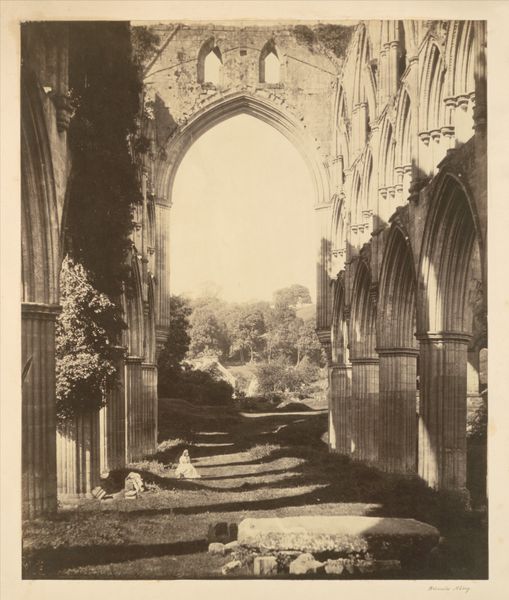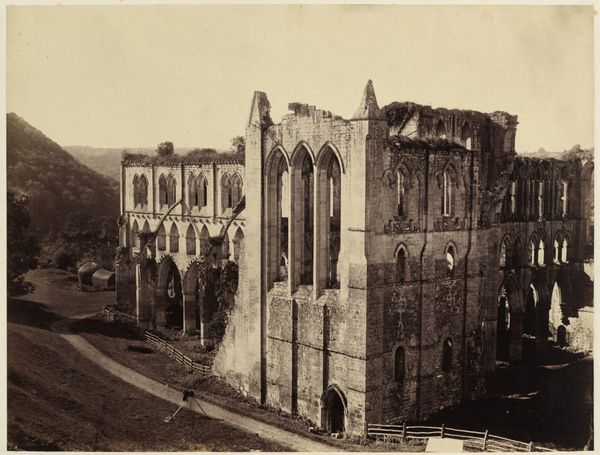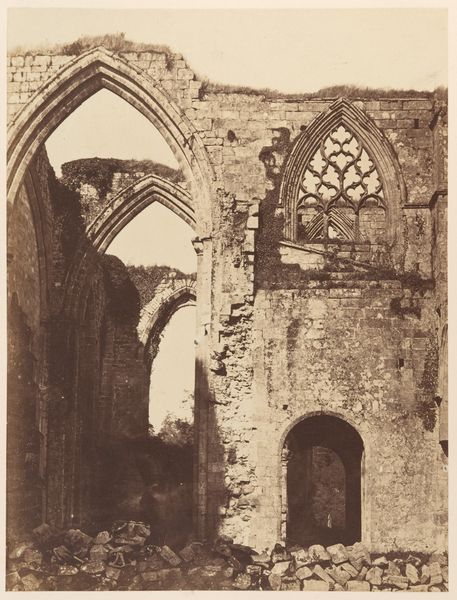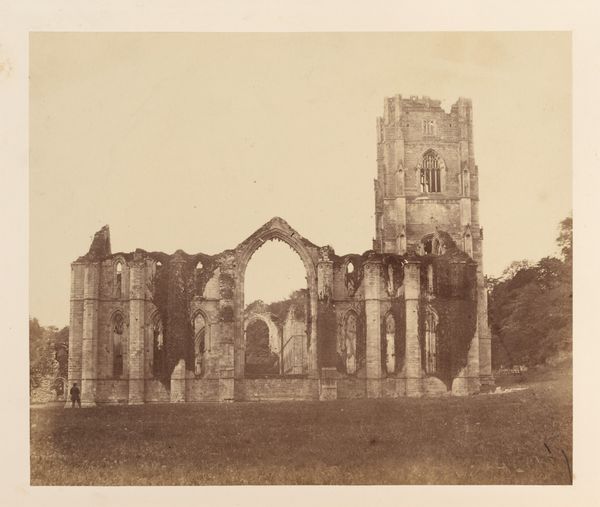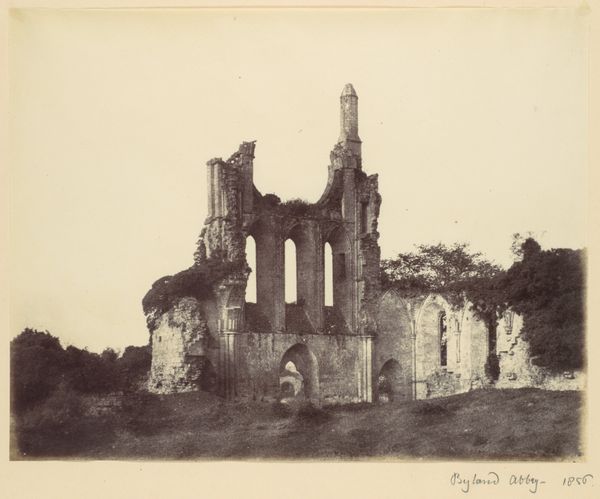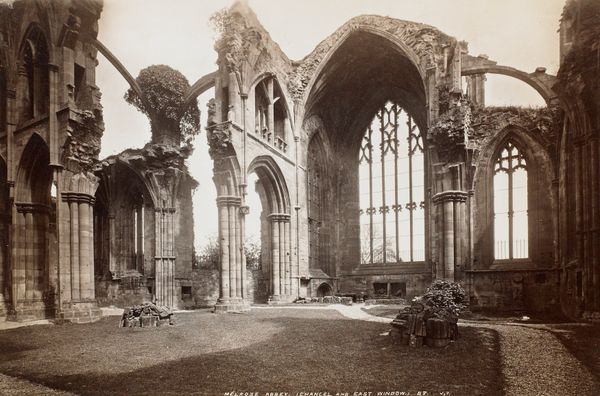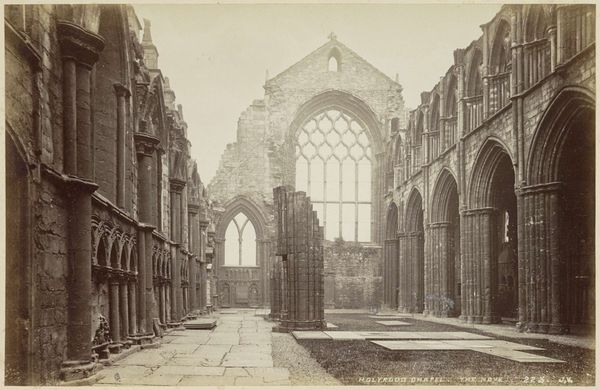
Fountains Abbey. The Chapel of the Nine Alters, Interior 1850s
0:00
0:00
Dimensions: Image: 28.6 x 23.6 cm (11 1/4 x 9 5/16 in.) Mount: 43.9 x 30 cm (17 5/16 x 11 13/16 in.)
Copyright: Public Domain
Curator: Here we have a photograph, dating back to the 1850s, by Joseph Cundall. It's entitled "Fountains Abbey. The Chapel of the Nine Alters, Interior," and captured using the gelatin-silver print method. Editor: It's remarkably haunting; a stillness hangs in the air. The architecture, with its grand arches reaching towards the sky, conveys a sense of profound history and the weight of time, or more importantly the elements on material. Curator: The romantic sentiment is clear—observe how Cundall uses the ruin itself to evoke a sublime response. Note the light filtering through the skeletal remains of the chapel, creating sharp contrast. Consider it as an early example of architectural photography using tonal arrangements. Editor: For me, the texture steals the show. Look at the crumbling stone, now cloaked in ivy, nature asserting itself. It begs the question—where did that stone originate? What labour constructed this, only for time and neglect to render it this way? How accessible were those processes to Cundall himself as the photographic artist? Curator: I’m glad you point that out; observe the geometry. The photographer very cleverly uses the remaining structures of the architecture to guide the viewers gaze. It is, on closer inspection, immaculately ordered and precise despite portraying age and disintegration. Editor: It's more than precise, it’s evidence! Each crumbling stone tells of countless human interactions and environmental processes. Its present condition underscores the continuous negotiation between creation, labor, abandonment and decay, wouldn’t you agree? Curator: Perhaps, but I’m captivated by the contrast: this divine structure contrasted with what has, eventually, turned into a ruin, alluding to cycles, life, decay, and possibly resurrection in visual language. Editor: In the end, whether decay or geometric forms strike you more profoundly, Cundall's work delivers so many stories surrounding material conditions that led to both architectural design and current decay. Curator: Indeed. It allows us to see architecture itself through the romantic photographic lens of history in decline and glory.
Comments
No comments
Be the first to comment and join the conversation on the ultimate creative platform.
